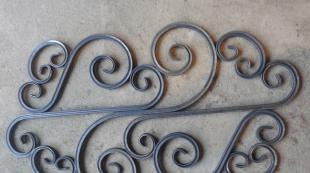Why is the electric pump not pumping water. Bottled Water Pump Selection Criteria
Any malfunction of the water supply system at home is the result of an error of the organization or individual involved in its implementation. In this case, the homeowner has a good chance to learn from his mistakes by repairing the electric pump with his own hands and, under a “successful” set of circumstances, improve his health by transferring water manually from the nearest water source for some time.
Rice. one Downhole pump assembled
This procedure applies to all types pumping equipment regardless of location and method of installation. It should be noted that the pump power supply system, in addition to wires switched by switches, does not have complex circuits, so if the water submersible pump does not pump water, but starts up and buzzes, problems with the supply of the necessary supply voltage in the vast majority of cases can be eliminated.
If the drain pump or downhole model does not pump water, it may not start if the built-in or external condenser fails and will need to be repaired with its replacement.
First of all, the repair of electric pumps should be started by turning off the supply voltage, removing it from the water intake source and disconnecting the outlet hose.
When reconnecting, the reasons why the pump does not work can be divided into several sections according to the place of manifestation - we will consider them below.
 Rice. 2 Water supply scheme of a private house
Rice. 2 Water supply scheme of a private house
Malfunctions of protective systems of pumps
Usually a properly assembled water supply system and high-quality pumps have devices that prevent them from working in the mode idle move.
In the event of a malfunction of such protective devices: dry-running relay for wells and float switches for drainage, well or fecal pumps, devices can work in the absence of water.
Sometimes the float switch of well or drainage pumps, due to improper installation, does not lower along with a drop in the water level (it falls on a hillock or clings to a protruding object) - this leads to the operation of the electric pump in idling mode and its further failure.
 Rice. 3 Popular Gilex pump with float switch
Rice. 3 Popular Gilex pump with float switch Vibrating pumps, which usually do not have external protective devices connected in the system, working for a long time without water after a drop in its level, can fail if there is no built-in thermal protection.
Depressurization or breakage of the water main
The malfunction will help to identify the removal of the deep pump from the source of water intake and connection to the supply voltage on the surface. If the pump lowered into the water for testing pumps water with the required pressure, then you should look for a leak at the place where the hose is connected to the outlet pipe or in pipes that, with regular water supply at home, are laid underground (in a house, a leak is easy to notice by the presence of water on the floor in a room with pumping equipment).
Mismatch between the parameters of the pump and the source of water intake
In the dry season or with a sharp increase in water consumption, a situation may occur when the well or well does not have time to be filled (the flow rate of the source is too small for the normal operation of pumping equipment). In this case, the electric pump will work in dry running mode for some time if there is no similar relay or float switch in the system.
Clogging of the water intake system
Highly common cause lack of water when the pump is running. Such malfunctions can occur at the stage of installation of pumping equipment: dirt and foreign objects can penetrate into the pipes. During operation, meshes and replaceable filter cartridges become clogged.
 Fig.4 Disassembled clogged electric pump
Fig.4 Disassembled clogged electric pump Filters and the impeller of the impeller of submersible devices need to be cleaned regularly during operation - if this does not happen, they become clogged over time and the operating pump hums, but does not pump water or does it with low pressure.
Often a situation occurs when the actuator of the pumps completely stops when clogged - the impeller does not rotate, the piston of the vibration pump does not move. A clogged borehole or drainage pump removed from a water intake tank does not pump water when it is turned on surface - do-it-yourself repairs will require disassembly and further cleaning of the device mechanism.
The pump is out of order
The biggest trouble that can happen with an electric pump is the burnout of the winding, while the device usually cannot be repaired (do-it-yourself winding is difficult, and in a workshop, the cost of work and materials will not be comparable to the price of an electric pump).
With this malfunction, the electric pump will hum, but it will not be able to pump water.
 Fig.5 Vibrating pumps under repair
Fig.5 Vibrating pumps under repair Sometimes the impeller of borehole and well pumps may break, the check valve system (they will not let water through) and the piston ring of vibration models may fail.
Due to constant fluctuations during operation, vibration pumps are subject to loosening and unwinding of the mechanism for fastening the composite housing, the fixing nuts of the check valve and the piston. These factors can lead to the loss of operability of a serviceable electric pump, which will hum, but not pump water.
Violation of the rules for the operation of submersible pumps, installation errors plumbing system, a sharp increase in water intake and a decrease in the flow rate of a well or well can lead to the hum of a working electric pump, in which water will not flow to the consumer. In most cases, you can repair electric pumps with your own hands, if you remove the device to the surface to accurately determine the problem area.
Motor pump does not pump
(too old post to reply)
2008-05-15 01:33:35 UTC
water,
hose with water ... but the instructions say that the type of this pump
self-filling (what this means is not clear) ... it is also written that it is necessary
hose at the time of starting the engine, and did not flow back into the basement ... in short
Valentin Davydov
2008-05-15 06:38:57 UTC
Date: Thu, 15 May 2008 01:33:35 +0000 (UTC)
Maybe someone has experience with motor pumps ..., there is a SA 45 TL motor pump
OLEO-Mac, with a power of 2.5 kW, it is necessary to pump out water from a basement 5 m deep,
suction height 7.5 m, hole diameter 50.8 mm, motor running, pump not
shakes, like I do everything according to the instructions, open the top cap, pour it in
water,
Completely, I hope?
I start the engine, I wait four minutes, it doesn’t pump, it’s written that I need to fill it up
water hose...
but the instructions say that the type of this pump
self-filling (what this means is not clear) ...
Inside the snail there is a channel (s) that pour water from the exit back to the entrance,
plus one or another way of separating air.
it is also written that
fill the pipe with water ... but HOW, when the hose is connected to the pump or it needs
disconnect and fill (hose 6 m, heavy, with thick rubber, so as not to
collapsed and filled with three buckets of water is difficult to connect to the pump), but also
in either case, when you fill the hose with water, the water simply does not drain
remaining in the hose, a non-return valve was not supplied with the pump, yes I
I think it’s hard to find a check valve for such a pipe diameter so that the water stays in
hose at the time of starting the engine, and did not flow back into the basement ...
Reverse
valve? Then pour the hose on the surface, check that the pump is pumping, and
then again fill the hose and lower it into the basement, trying not to draw water into it
air.
shorter
frustrated at the prospect of manual scooping, pump not working, his
lack of knowledge on this subject...
for air suction.
Shaft. Dove.
2008-05-15 08:18:43 UTC
does not pump, like I do everything according to the instructions, I open the top cap,
I fill it with water
VD> Completely, I hope?
Yes, I pour until the water starts to overflow ...
I start the engine, I wait four minutes, it doesn’t pump, it’s written that I need to fill it up
water hose...
VD> Napsano also that 100 seconds is enough.
VD> In the inlet filter (intake) at the end of the hose, isn't there
VD>
VD>
VD> draw air into it.
water?
because from the surface of the earth to the water mirror two meters, this is what I need
lower the ladder, go down to the basement, standing chest-deep in cold water, clamp
hand hole so that water does not pour in, and the second must fill this
suction hose through the outlet?
VD> The instructions say (in bold, by the way) to check the seals
VD> for air leaks.
Valentin Davydov
2008-05-15 10:43:55 UTC
Date: Thu, 15 May 2008 08:18:43 +0000 (UTC)
VD> Napsano also that 100 seconds is enough.
Has the pump deteriorated if it worked without water for 5-10 minutes?
And God knows what kind of stuffing box she has on the shaft. In theory, it shouldn't.
VD> In the inlet filter (intake) at the end of the hose, isn't there
VD> check valve? Then pour the hose on the surface, check that the pump
VD> pumps, and then pour the hose again and lower it into the basement, trying not to
VD> draw air into it.
yes, when the hose is full and pumps from the barrel, the problem is how to lower the hard
a thick hose into the throat of the basement (one and a half by one and a half) without pouring out the poured
water?
VD> The instructions say (in bold, by the way) to check the seals
VD> for air leaks.
Yes, I checked ... all the hoses are tightened with clamps
Please answer, otherwise you will probably have to buy a wetsuit and climb into
cold water and lie down with your chest on the embrasure, that is, to plug the pipe with something,
while the other will fill it with water ....
Cheaper to buy a submersible electric pump, in my opinion. If there is nearby
electricity, of course.
Shaft. Dove.
2008-05-16 00:55:32 UTC
VD> For example, lower the middle with a loop, and then the end, plugging the output
VD> pump nozzle so that air is not sucked through it.
no, it won’t work, you first have to lower the end of the hose into the basement, and then
pushing the pump, lower the hose, I’ll go on the weekend, put on swamp boots and
I’ll go down, the main thing is to be able to fill this hose through the outlet,
so that the snail passes the water further to the suction hose ....
VD> And the plastic pipes are not cracked, do they sit well in their seals?
no it didn't crack
VD> Cheaper to buy a submersible electric pump, in my opinion. If nearby
VD> there is electricity, of course.
Well, electricity is not safe in a humid environment, and not in this area either
there is no light in the water, it fills it in the spring (10 cubic meters), you scoop it up until August and
watering ... and now I would like to raise water into the tank ....
2008-05-15 04:19:40 UTC
Hello S_Stepanov!
[kus]
SS> scooping, not working pump, its lack of knowledge on this
SS> question...
I have no experience with motor pumps, there is a small one with "electro". Theses:
1. There is a 2" check valve in nature, and inexpensively.
2. Check the tightness of the fastening of that hose to the pump inlet and the absence of holes in
hose above the water level, whether there is air leakage.
3. Did she work before or right away?
Till!
2008-05-26 01:47:24 UTC
So I experimented ... a motor pump pumps from barrel to barrel .. I even had to
lower the pump closer to the water surface, i.e. make an extension in a narrow (1.5 X
1.5) throat of the basement and lower the twenty-kilogram pump by two meters, also
pumps when the hose is completely in the water, the question remains, since the pump is necessary
use very often, then how to fill the hose with water from the water mirror to
pumps (2 m), something like a check valve
2008-05-26 03:37:42 UTC
Hello S_Stepanov!
SS> 20 kg pump, also pumps when the hose is completely in the water,
SS> the question remains since the pomp should be used very often, then how
SS> fill the hose with water from the water mirror to the pump (2 m), something like
SS> check valve
The main thing is that the water is in the pump body itself. For this, it is traditional
an additional tank of 10-20 liters is made with a tap. When starting the pump, the faucet
opens, water goes to the impeller, the impeller starts to suck. How to process
went - the water begins to pour back through the tap. Waiting for the tank to fill up
close the faucet until next time.
2008-05-26 08:08:12 UTC
MKP> The main thing is that the water was in the pump body itself. For this
MKP> traditionally an additional tank of 10-20 liters is made with a tap. At
MKP> when the pump is started, the tap opens, water goes to the impeller, the impeller
MKP> starts to suck. How the process went - water begins to pour through the tap
MKP> back. We are waiting for the tank to fill and close the tap until the next
MKP> times.
--- 1---| 1 - Plug filling the pump, a little further away is the outgoing
pipe branch
| <-- впускной патрубок, но он закрыт резиновой прокладкой, чтоб
| water did not leave the pump housing
________|
So where should I pour water from the barrel into the outgoing pipe or into the hole for
filling the pump, and what will happen after the pump housing is filled, the water in
the hose does not get in due to the rubber gasket, which only works on the inlet,
and the air layer in the hose remains ... it turns out, after filling the body
water from the barrel, and whether the air layer disappears after the pressure
will equalize and the engine will start to work ..?
2008-05-26 08:56:58 UTC
Hello S_Stepanov!
SS> I also thought about lowering the hose from the outgoing pipe back
SS> to the basement to pressurize the suction hose...something
SS> slips about the ejector, but it's not clear what's what....
Chingachgook is a big bastard. Makc K Petrov
2008-05-27 02:48:17 UTC
MKP> Not help, because. perpetual motion is impossible :)
In short, I realized that before buying a pump, you need to be interested not only
neither at firefighters, nor at pumping stations ... there are also specialists, some textbooks,
2008-05-27 08:58:35 UTC
SS> a check valve in the form of a rubber round will not withstand such pressure (even
SS> backwater from the bottom of the water will not help), but a more powerful check valve on springs will not
SS> the pump will pump ... There is one caveat, do such situations not occur
I'm embarrassed to ask - have you ever seen a check valve? What you
you call it a "powerful check valve on springs"? The beauty of a check valve
just in the fact that in the direction of the flow of water it creates resistance
close to zero, and in the opposite direction - close to infinity.
--
Best regards, Alex Bakhtin, CCIE #8439
AMT Group, Cisco Systems Gold Partner, http://www.amt.ru
Valentin Davydov
2008-05-27 09:30:54 UTC
Date: Tue, 27 May 2008 02:48:17 +0000 (UTC)
MKP> Not help, because. perpetual motion is impossible :)
This is not a perpetual motion machine, because work is still being done
engine ... it just slipped on the internet to increase the pressure in
suction hose, they make an ejector, but they don’t explain what’s what and what it is
the beast and the principle of its work is also not clear ...
In short, I realized that before buying a pump, you need to be interested
And you bought it too? I once thought that she was free for you
got. Because if I were you, I would buy something with 25mm
nozzles for a three to four times less amount, and a transparent inlet hose,
to see where it sucks.
Not only
height of water rise, power, but also what is the maximum air bubble
allowed in the suction hose .... because if with a diameter of 50 mm and a height of 7
meters, it turns out you need 100 liters of water to fill this hose,
check valve in the form of a rubber round will not withstand such pressure (even
water support from below will not help), but a more powerful check valve on springs will not
the pump will pump ... There is one caveat, do such situations not occur
not at fire departments, not at pumping stations...
Meet. And there these problems are solved by appropriate measures. Starting
from the starting barrel, connected by cranes to the inlet and outlet, and ending
(on large pumping stations) specially adapted vacuum
pump for drawing air from the inlet pipe.
there are specialists, some textbooks,
but on the Internet, you can even find a pump device figs ... one spam and porn ...
http://www.google.com/search?q=self-priming+pumps, the first link.
P.S. Here's where it's written briefly and sensibly:
http://www.elektroagregat.ru/vibiraem/pump/1.html
The pump for bottled water allows you to safely use the container large capacity. For example, it is not possible to lift a bottle with a capacity of 19 liters and easily pour the liquid in it.
Using a small container is often not very convenient, and poorly effective. Therefore, special compact pumps are designed specifically to facilitate the use of large capacity bottles.
Application area
Purified water without chlorine impurities is the conscious choice of most users. That is why bottled water diverges with steadily increasing popularity, and in containers of large volumes, for example, with a capacity of 19 liters. Convenience of pouring is provided by a pump for pumping out bottled water.

electric pump
These are very compact devices that are installed at the top of the container. There are two types of them:
- Mechanical;
- Electric.
Such pumps are used in various fields: at home, at work, at construction sites, in office premises, in a word, everywhere where people are regularly located. The name of the pump was solely due to its intended purpose - pumping water from bottles.
Design features and principle of operation
difference mechanical type devices from the electrical version is the need to constantly apply pressure on the button that drives the pumping mechanism. Electric models run on batteries or mains power and further simplify the operation of already not too complex devices.
The principle of operation of such devices is extremely simple: after pressing the button, air is supplied into the container, which displaces a certain amount of liquid. A water pump for pumping bottled water delivers liquid in portions, which may well be enough to fill a kettle, glass and other containers, depending on how long the user held the button in the working position.
Choice principle
Considering that such devices are constantly in contact with drinking water, then first of all, the quality of workmanship is taken into account, in particular, the properties of plastic (namely, these pumps are usually made from this material). It is equally important to choose a model with a performance level and parameters that will correspond to a certain container capacity.
Watch the video, selection criteria:
Different versions of the pumps are equipped with a water intake tube of various lengths, which also allows you to drain bottles of certain capacities and depths without leaving a residual amount of liquid at the bottom, as often happens with an improperly selected pump.
An additional bonus is the wide range of colors of such devices. If a pump is selected for operation in living conditions, then it is quite possible to choose the execution of a suitable shade for a certain interior.
Popular models from different manufacturers

Sail pump model
You can buy a pump for pumping bottled water from a container of different capacity for quite affordable price. For example, the Sail pump costs about 600 rubles. This type of device is designed to work with containers with a capacity of 11 and 19 liters, made in a mechanical version.
It is distinguished by high quality, which is noticeable in work: it does not creak, does not require much effort, and is easily installed on the neck of the bottle. A distinctive feature of this design is the button, Bottom part which is made in the form of corrugations, but with thick enough walls to withstand heavy loads.

Pump BIORAYWA 3185
An alternative option is the BIORAYWA 3185 pump, designed for containers with a neck diameter of 5.5 cm. This is the main advantage of this model, which expands the scope of the device.
The set also includes a brush for cleaning the product, which simplifies its care. This performance is somewhat more expensive - 900 rubles.
Another model is HotFrost A5 for pumping liquid from containers of 11, 13 and 19 liters. But in addition to this, it is possible to use this device in relation to bottles of 5, 6, 8, 10 liters. For this, a special adapter is included in the kit. Another convenient feature is the presence of an additional section that can be connected to the nose of the device, thereby increasing the overall length of this element by several centimeters.
As you can see, most of the models are mechanical. This is entirely justified for a number of reasons. Firstly, if it is chosen for bottled water, then its price is always very democratic. Secondly, the operation of such options does not require connection to the network or to autonomous power supplies (batteries), although you will have to work hard to get water from containers such as bottles with a capacity of 19 liters.
Operation and care

Model HotFrost A5
To reduce the intensity of penetration of dust and other contaminants into the case, it is recommended to close the spout cover (if provided by the design). This will keep the quality of bottled water at a high level.
To avoid damage and contamination of the spout, do not touch it with the water container. After a long period of inactivity, the device must be washed, after disassembling it into its components.
This is done with extreme caution, since most of the structural elements are made of plastic. But in addition to rare downtime, the device needs regular cleaning, regardless of how intensively it was used. The sequence of actions in this case is as follows:
- The pump is carefully disassembled into components.
- All structural elements should be thoroughly rinsed, again, without much effort. It is not recommended to use aggressive detergents enough clean water.
- If there is heavy dirt, you can leave the pump in hot water(temperature not higher than 60 degrees) for a short period of time - no more than 15 minutes.
- It is necessary to dry all the details of the mechanism, after which you can assemble the device in the reverse order.
For ease of use, some manufacturers equip the pump with a special cleaning element - a brush. Thanks to this, it becomes possible to more efficiently and quickly cope with the cleaning process.
Thus, the task of using large-capacity containers can be facilitated by a rather simple device in design - a pump that is installed on the neck of the bottle. When choosing, you should take into account the volume of the container, as well as the diameter of its neck. Some versions of such devices are equipped with adapters, through which it is possible to use one pump for large and small bottles. The cost of the mechanical type of devices is noticeably lower than the electric ones, and the advantage of the latter is not very noticeable in operation.
Sometimes happy owners of a well and autonomous water supply country house faced with a problem when water stops flowing from the tap in the house. There can be many reasons why the pump does not pump water from the source. To get rid of this problem, you need to find and eliminate the cause. In our article, we will describe the most common reasons why a pump may not pump water out of a hydraulic structure. In addition, we will give recommendations on how to eliminate them.
For the correct and uninterrupted operation of pumping equipment, two important components are required - water and electricity. If you identify an element that does not allow the unit to work, it will be easier to find the cause.
In order for a well or other hydraulic structure to supply water uninterruptedly, 4 conditions must be met:
- The source must have water that can be pumped.
- Proper power supply of pumping equipment (frequency and voltage must correspond to the parameters for which the unit is designed).
- The pump must be in good working order, that is, its power and performance must be within normal limits.
- All faucets, filters, valves and piping must be in working order.
Since the water supply system can be used not only for the home, but also for watering the garden, the problem must be looked for in three directions:
- in a hydraulic structure;
- inside the house;
- in the ground.
But it is necessary to act by the method of exception. First, disconnect the supply hose in the caisson. If the liquid flows, then the problem lies in the house or on the main pipeline in the trench. If water does not flow, then the problem should be sought below the ground level in the well or equipment.
If the pump unit is buzzing, but the liquid does not pump, then the problem may be as follows:
- An error was made during installation, at the stage of selecting components or during operation.
- Sometimes this happens due to power surges or a significant decrease in the amount of water in the source.
- Phase failure may occur during internal arrangement electric motor.
Tip: if a previously properly working unit does not pump water, then the reason should be sought in the absence of water or electricity. With new, previously unused equipment, everything will be more complicated. Here the reason can lie anywhere.
Common cause

If your pumping equipment is buzzing, as during operation, but does not pump water from the well, then the reasons may be related to mechanical damage or clogging of the hydraulic structure. To begin with, try to remember what water came out of the tap on the eve of the breakdown.
If a turbid liquid flowed from the tap or the pressure suddenly began to decrease under the standard operating mode of the pumping equipment, then the trouble most likely lies in the well itself. This happens if the hydraulic structure is silted up or clogged. This phenomenon is commonly referred to as well sanding. And it can be called:
- small algae that live in water;
- solid impurities brought by the current;
- shedding of rock from the walls of the tunneling;
- sand lifted from the bottom of the well by pumping equipment.
All these components can clog the clearance of a hydraulic structure. As a result, first muddy water with sand will come out of the tap, then with air, and then the flow will stop altogether. In this case, the protection against dry running in your pumping equipment may not work.
To fix the problem, you need:
- Pull the submersible pump out of the well.
- All water from the hydraulic structure is pumped out.
- Disinfection of the interior space.
- Re-pump out the water. The time for re-pumping depends on the disinfectant used.
After cleaning the well, the pump should start working. But even if this did not happen, you should not hang your nose, because cleaning the hydraulic structure will benefit the quality of the water and the durability of the source.
What to do next?

If cleaning the well did not help, then the following situations may be the causes of the malfunction:
- failure of mechanical parts of pumping equipment;
- breakdown in the power supply system;
- violation of the tightness and integrity of the main pipeline;
- malfunction of one or more pump control units.
But in order to understand exactly what the reason is, the submersible unit must be raised to the surface from the well. Then the pump is lowered into a container of sufficient size filled with water and started:
- If the engine starts to work when starting, then there is no breakdown in the electrical system. Otherwise, such malfunctions can be suspected. But the search and elimination of the causes of the breakdown of the electrical system should be carried out by an experienced specialist.
- It is worth watching a running motor. At the same time, try to visually assess the integrity of all pipelines and hoses. Sometimes the pump does not lift water well due to the fact that the tightness of the hoses is broken, and the pressure in the system has dropped.
- But a leak may not be noticed right away, especially if the damage is very small. To make such places more noticeable, the outlet on the hose must be closed by hand. Then the pressure in the pipeline will increase, and jets of spurting water will appear in places of depressurization.
Important: it is better not to seal the damaged hose, but to purchase and replace it with a new one. The thing is that due to the strong pressure, the patches can move away.
If the unit works, but does not pump water

Let's say that there are no problems with the electrical system and the integrity of the hoses, but the water pump still does not pump fluid from the well. To look for the answer to the question why the device does not pump water remains only in the pumping equipment itself. To do this, you can do the following:
- First you need to check the filter device and check valve. They may be clogged, so they will need to be cleaned. In some cases, it may be necessary to replace these products or one of them with a new element due to the complete wear of the old part.
- The second node to be checked in the BC (household centrifugal) pump is protection against "dry running". The sensor could simply burn out, so the unit began to work in the well without water. This quickly leads to overheating of the motor and failure. It is better not to repair such equipment, but to replace it with a new product. So it will be more reliable and safer to operate the unit in the future.
Common faults

Most often, well owners are faced with a problem when the submersible pump previously worked properly and pumped water, but suddenly the water from the tap stopped flowing. We will list possible faults that led to this situation, and also tell you what to do:
- Significant lowering of the water level in the hydraulic structure. In this case, the water flows normally at first, then it flows weakly and the flow stops altogether. In this case, equipment with a thermal relay or a float mechanism will automatically turn off. Also, protection against "dry running" may work. Usually, such a problem is observed in the summer during a drought, if mistakes are made when digging a well, a well, or their productivity is incorrectly determined. Solution:
- always use protection against running dry, so you keep the pump in good working order;
- it is better to drill a well or a well in winter, when groundwater is at the lowest level, then in summer the level will not drop critically;
- for drilling, contact only professionals;
- Perhaps the well needs to be cleaned.
- The performance of the pumping unit is higher than the debit of the hydraulic structure. In other words, the source does not have time to fill with water, and the pump quickly pumps it out. In this situation, the same thing happens as in the case of dry work. Sensors will work and turn off the pump. This can happen if the pumping equipment is not properly selected, many water intake points are open and the garden is watered at the same time. To fix the problem you need:
- choose the right pump based on the performance of the well and equipment;
- when choosing, take into account peak hours of water consumption;
- do not open all the taps in the house at the same time;
- the power reserve of the motor should be small.
- Weak pressure does not allow you to raise water from the source. This may also be the case with wrong choice equipment. For example, if a device with a maximum head of 30 m is purchased for a well with a depth of 50 m, then it simply will not be able to raise water to the surface. In this case, you will hear the sound of the operating unit until the thermal relay cuts off the power. To fix the problem, you need to choose the right pump.
Tip: when selecting a unit for pressure, horizontal sections of the pipeline should also be taken into account. At the same time, they are considered in the proportion of 5 to 1, that is, 5 meters of the horizontal are equated to 1 meter of the vertical.
- Voltage drop. Many pumps are very sensitive to mains voltage fluctuations. When it falls below 200V, the submersible unit may either not turn on at all, or start up, but sharply reduce the pressure and then stop the water supply. To find the problem, you need measuring instruments. You can do the following to fix it:
- connect the pump to the generator;
- use a voltage stabilizer or autotransformer.
- Clogging of the pipeline, shut-off valves or filtering device on pumping equipment. This often occurs during first start-up or after maintenance, resulting in debris, dust and dirt entering the pipes, clogging the listed parts. Sometimes this happens due to the ingress of debris from the bottom of the hydraulic structure. To deal with the problem is:
- be careful when assembling new equipment or performing maintenance;
- raise the pumping equipment to the surface and rinse it, for this the unit must work in a container with water with the check valve removed and without a pipeline.
- Disconnection or damage to the pipeline. In this case, gurgling water will be heard from the source. It is necessary to check the connection and integrity of the hose.
- Complete failure of pumping equipment. If the sound of a running motor is heard, but you have not found other reasons, then malfunctions with the mechanical parts of the pump can be assumed. It remains to lift the unit to the surface and carry it to the service center.
If you live in your own country house with autonomous water supply, then you definitely need to study the design of the water pump, the causes of possible breakdowns, know why the pump does not pump water from the well and how to fix such a problem.
Finding a reason
To troubleshoot a water pump, it is important to first find out the cause of the breakdown. But first of all, it is necessary to determine those conditions without which the normal operation of the device is impossible:
- The amount of water that the pump will lift up. Reducing its level can affect the pressure.
- The power supply parameters must comply with technical specifications pump. In other words, it is necessary to correctly select the power of the device in accordance with the depth of the well and the calculated water flow.
- Pump serviceability.
- Taps, filters, valves, pipes and other elements of the device must also be in good condition. Failure of at least one component of the system will lead to malfunctions.
Often tap water in a private house is necessary not only for internal consumption, but also on the street (for watering the garden, washing the car). Therefore, the cause of the malfunction should be sought in three directions - in the hydraulic system, indoors and outdoors. How to determine the cause? Let's use the elimination method.
First, disconnect the supply hose located in the caisson. If at the same time water flowed, then the problem is either indoors or in the pipes on the street.
If there is no liquid, then the reason may be hiding in the well itself or in the details of the pump. Sometimes this situation also happens - the device is buzzing, but there is no water. Then the most likely reasons are:
- Incorrect installation or some parts of the pump that are not quite suitable.
- A decrease in water in the well, as well as surges in the electrical network, can also be the culprit in water supply problems.
- Phase failure during operation of the electric motor.
If, until recently, the device worked properly without breakdowns, perhaps the cause should be sought in voltage drops in the power grid or water supply problems in the well. If the system is completely new, then finding the cause will be more difficult.
Most likely cause of failure
If water does not flow from the well, and the system is buzzing, the problem may be due to clogging or mechanical damage to parts of the water supply system. Try to remember if the water quality has changed recently? Has the pressure decreased? If so, then we can safely assume that the cause of the pump failure was a simple blockage. Small algae, sand, silt - that's what can pollute the system and cause it to break.
Clogging is primarily characterized by the appearance of sand and foreign particles in the water flowing from the tap. Then its quantity and pressure gradually decrease until the water stops flowing at all. Yes, the pumps have protection against the so-called "dry" operation, but it may simply not work. And then water does not flow from the well, but the motor and all other parts continue to work.
Blockage removal
To clear the blockage, follow these steps:
- We raise the submersible pump to the surface from the well.
- We pump out water with a pump.
- We clean and disinfect the entire area of the internal space.
- We pump out the water again.
If the water does not go, do not be discouraged - in any case, cleaning will benefit both the pump and all other parts of the water supply system. It must be performed regularly.
Further action plan
Why does the pump not pump water from the well even after cleaning? The following problems may be the cause:
- Malfunctions in the electrical system.
- Damage to the mechanical parts of the pump.
- Violation of the tightness of the pipeline. There may also be holes and cracks in the pipes.
- Malfunctions in the operation of the pump control units.
To figure out exactly what exactly broke down, we take the pump out of the well and immerse it in a container filled with water. It can be a large basin or a barrel. If the motor is running, then there is no breakdown in the electrical system. If the engine does not start, you need to call a specialist.
Attention! Do not attempt to repair the electrical system of the motor! This should only be done by a professional!
While the engine is running, visually check for holes or cracks in the pipes and hoses. Remember that even a slight deformation will result in a pressure drop. For a more accurate result, close the outlet hole with your hands. Then the pressure inside the pump will increase and even small places where there is a leak can be seen.
If any hose is damaged, do not seal it. It's better to buy a new one. The fact is that even after a quality repair, the hose will not last long due to its operation under water pressure - the adhesive tape will constantly break off, and the glue will be washed off.
The pump works but does not pump water
What to do if you have not found any problems with the electrician, or with pipes and hoses? It's most likely the pump itself. Before pumping water from the well, we carry out the following actions:
- First of all, you need to check the filter and check valve. They should either be cleaned or completely replaced. It all depends on the degree of clogging and wear of the part. Since these components are not so expensive, we recommend replacing them at the first sign of deformation and aging.
- The unit responsible for shutting down the system when the water supply is cut off may break or burn out. This spare part should not be repaired, but immediately replaced. This will allow you not to worry that the pump will stop supplying water again. At the same time, do not forget to check the adequate supply of the well with water. The fact is that this node can overheat when the water level drops critically.
A number of other reasons
There are several more reasons why the pump stops pumping water from the well:
- A significant decrease in the water level in the well. The main reason for this phenomenon is improper drilling. Often the water level drops in the summer, during dry periods. To prevent such situations, it is necessary to contact only trusted well drilling companies, as well as use the dry running protection system. It will not be superfluous to clean the well with the help of special tools.
- A centrifugal pump can pump out water faster than the well can refill. It is necessary to choose the right pump based on your personal needs. At the same time, it is better to buy a device with a power slightly higher than necessary, because guests may come, or you will need to water the garden large quantity water. Do not forget to save it as reasonable as possible - do not open all the taps in the house at once and do not pour water in vain.
- Weak pressure. Another problem that arises if you choose the wrong pump. For example, the depth of the well is about 50 meters. And the device is designed for a shaft length of about 30 meters. Of course, he will not be able to raise water to the surface with the necessary pressure.
- Power outages can adversely affect the operation of all appliances, including the water pump. In this case, it is recommended to buy a voltage stabilizer, or connect the pump to the generator.
- Disconnection of the pipeline. With this option, you can hear the "gurgling" of water. You need to check the water supply system and fix the problem.
- Clogged pipes or system filters. Often occurs during the first, trial run of the pump and water well. At this time, sand or clay particles may enter the hoses or pipes. main reason- Incorrect or insufficiently high-quality assembly of the system. It is important to observe accuracy and accuracy during installation. To eliminate this problem, the pump can be washed in a container of water, after disconnecting the pipeline and check valve.
- If the sound of a running engine is clearly audible and all possible reasons malfunctions, and there is still no water in the house, we recommend pulling out the pump and taking it to a repair center.









